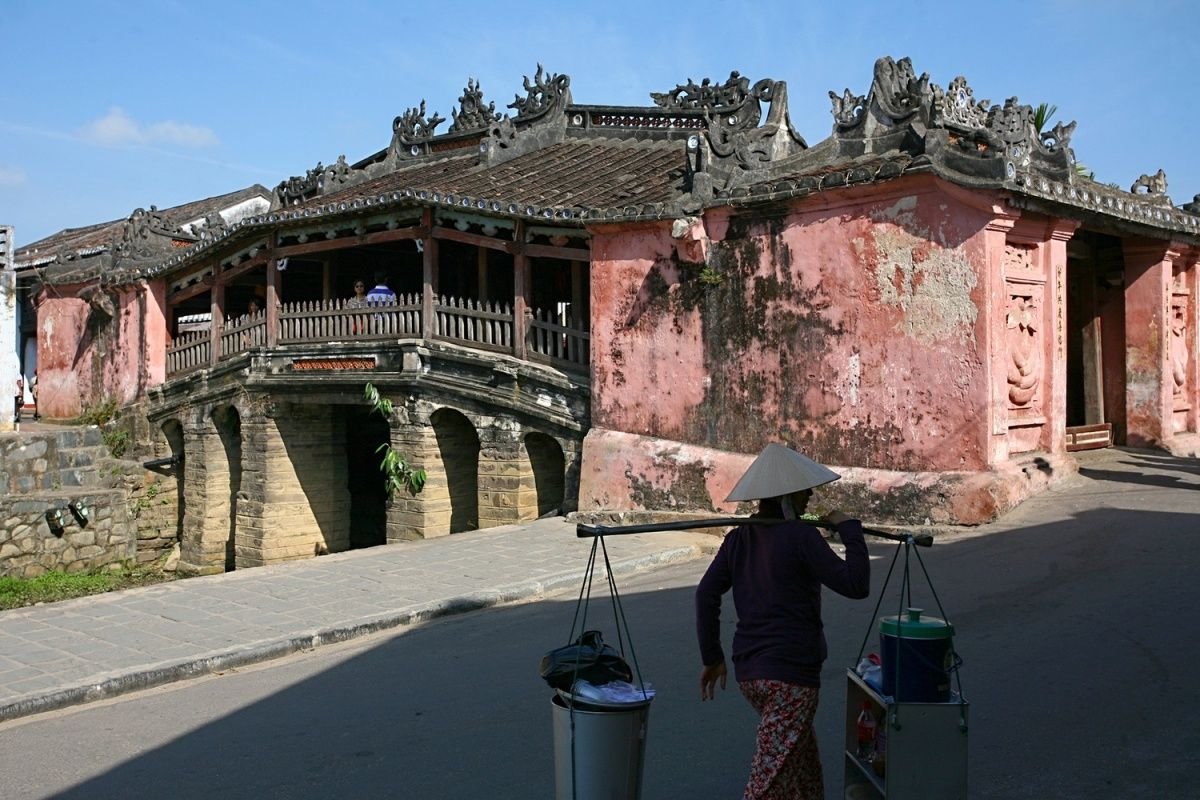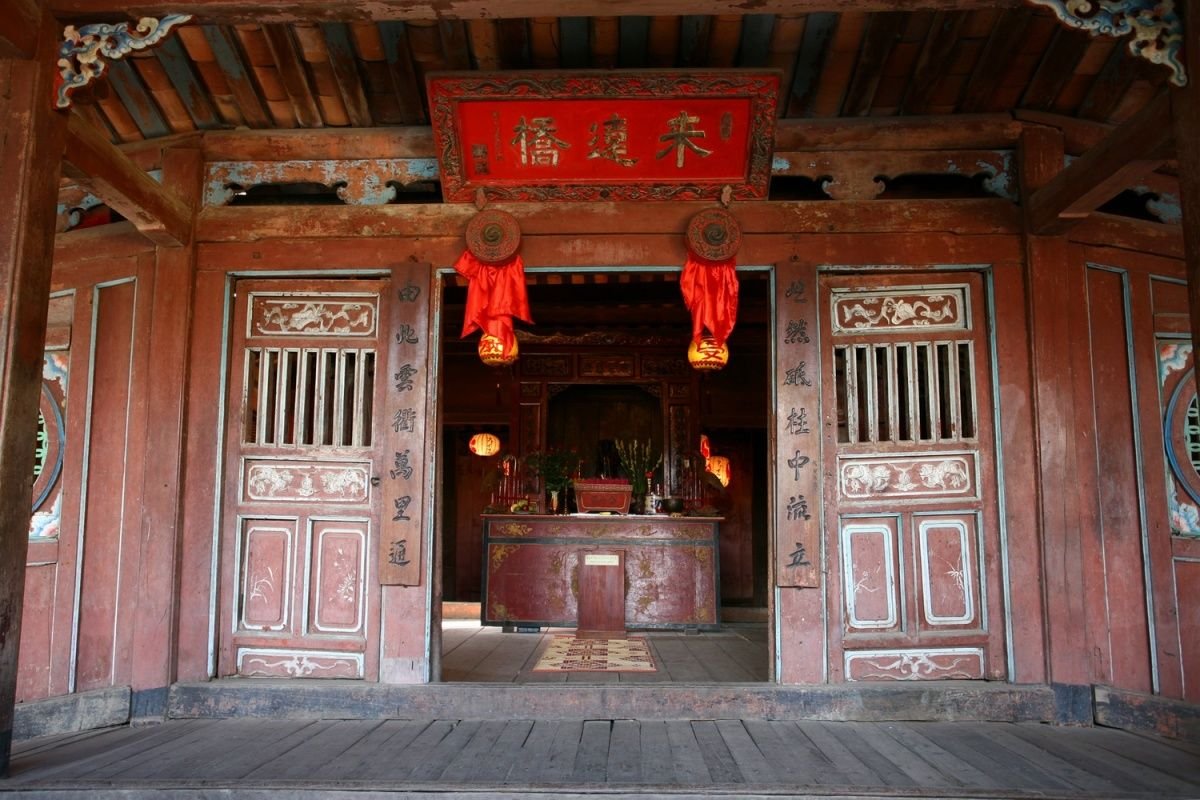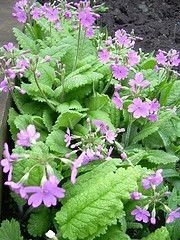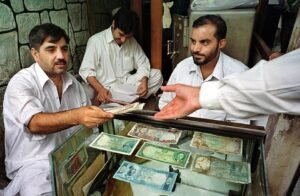
Covered Bridge - the soul of Hoi An heritage 0
Chua Cau is an ancient bridge connecting Tran Phu and Nguyen Thi Minh Khai streets, located in the southwest of Hoi An ancient town, Hoi An city, Quang Nam province.
The bridge was originally built by Japanese merchants around the mid-16th century, so it is also called the Japanese bridge.
Chua Cau is an ancient bridge connecting Tran Phu and Nguyen Thi Minh Khai streets, located in the southwest of Hoi An ancient town, Hoi An city, Quang Nam province.
The bridge was originally built by Japanese merchants around the mid-16th century, so it is also called the Japanese bridge.

In fact, in addition to its traffic and religious functions, the bridge was previously a meeting point and a place to arbitrate trade disputes in Hoi An trading port.
In 1653, a pagoda was built on the northern slope of the bridge, making the building’s surface T-shaped;
In fact, in addition to its traffic and religious functions, the bridge was previously a meeting point and a place to arbitrate trade disputes in Hoi An trading port.
In 1653, a pagoda was built on the northern slope of the bridge, making the building’s surface T-shaped;

Covered Bridge is about 18 m long, about 3 m wide;
Covered Bridge is about 18 m long, about 3 m wide;

In the middle of the bridge is the entrance to the Pagoda.
Above the entrance to the altar room is a sign with the three words `Lai Vien Kieu`.
In the middle of the bridge is the entrance to the Pagoda.
Above the entrance to the altar room is a sign with the three words `Lai Vien Kieu`.

The wooden frame systems adapt to the curved shape of the bridge (photo).
Covered Bridge has undergone many restorations, in 1817, 1865, 1915, 1986, many of the original Japanese architectural features have been lost.
The wooden frame systems adapt to the curved shape of the bridge (photo).
Covered Bridge has undergone many restorations, in 1817, 1865, 1915, 1986, many of the original Japanese architectural features have been lost.

On some trusses and roof rafters there are embossed Chinese characters.
On some trusses and roof rafters there are embossed Chinese characters.
The building’s roof is covered with yin and yang tiles, with sophisticated decorative details on the ridge and flowing banks.
The building’s roof is covered with yin and yang tiles, with sophisticated decorative details on the ridge and flowing banks.
At both ends of the bridge there are statues of monkeys – spirit monkeys (right) and dogs – tengu (left).
The origin of these mascots is unknown.
At both ends of the bridge there are statues of monkeys – spirit monkeys (right) and dogs – tengu (left).
The origin of these mascots is unknown.
Covered Bridge is truly the most valuable architectural and cultural heritage in Hoi An, considered a symbol, the soul of heritage as well as an attractive tourist destination.
Currently, the project is being degraded by the effects of time and natural disasters.
Covered Bridge is truly the most valuable architectural and cultural heritage in Hoi An, considered a symbol, the soul of heritage as well as an attractive tourist destination.
Currently, the project is being degraded by the effects of time and natural disasters.
Ha Thanh
Danang FantastiCity cooperated with VnExpress.net to conduct a psychological survey of tourists on choosing destinations in Da Nang after the Covid-19 epidemic.
Readers are invited to send articles and questions here or to dulich@vnexpress.net





